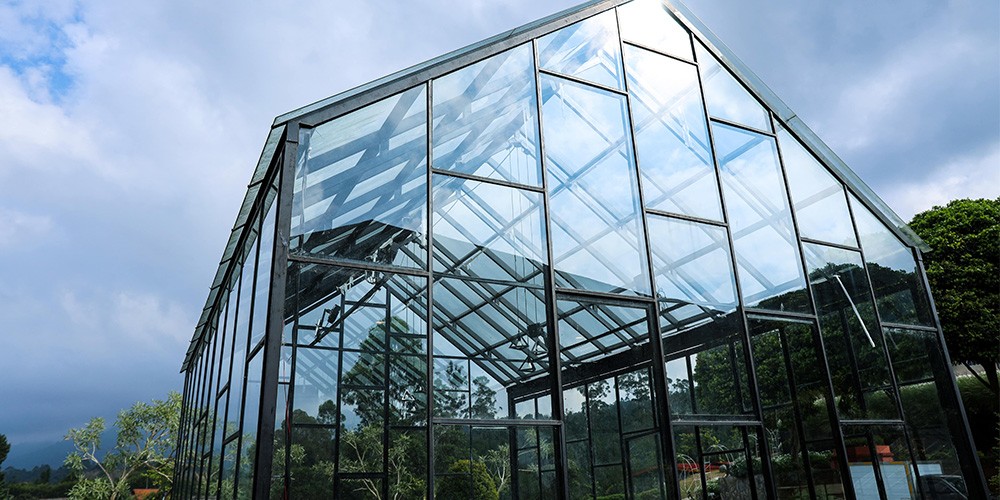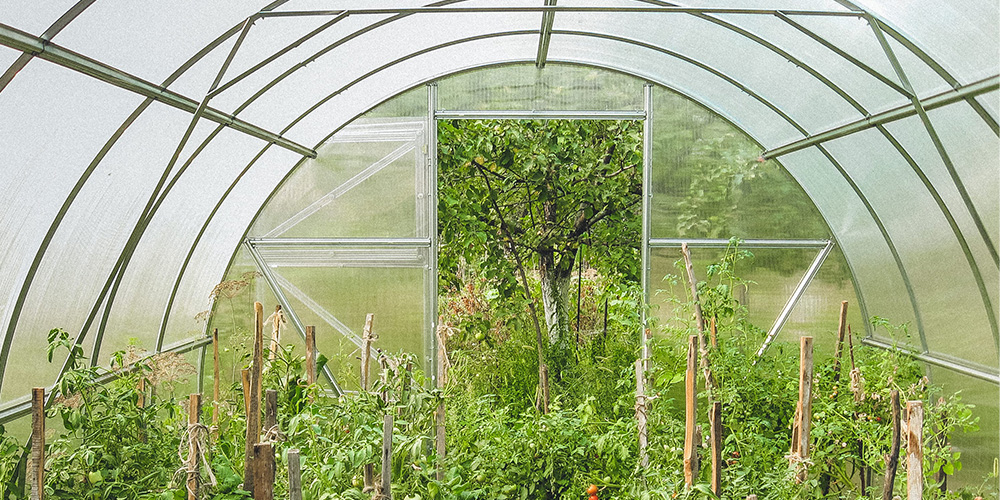What is the Best Polycarbonate Sheet for my Greenhouse?

If you want your plants and produce to grow strong and healthy, there are two things that your greenhouse absolutely must have. One, plenty of access to natural sunlight and two, protection from rain, sleet, hail and all other manner of temperamental weather. For many years, glass was the answer. It offered an inherent strength along with transparency and stunning visuals.
This made for greenhouses that weren’t just a haven for plant life, but also buildings that could easily introduce an added sense of grace and luxury to any garden. However, glass was not without its drawbacks. For a start, it is fragile, heavy and difficult to install. What’s worse, if a pane is damaged – whether during the fitting or afterwards – it is expensive to replace. The solution for all these problems? That was polycarbonate.
Contents:
- Why use Polycarbonate for Greenhouses?
- Best Type of Polycarbonate for a Greenhouse?
- How Thick Should Greenhouse Polycarbonate be?
- What Colour Should my Polycarbonate be?
- Tips for Fitting Polycarbonate on a Greenhouse
Why use Polycarbonate for Greenhouses?
- High light transmission
- Phenomenal insulator
- Resistant to weathering & impacts
Polycarbonate shares many properties with glass. Not only do they allow for a great deal of light transmission, but they also boast strength and rigidity far surpassing that of the fragile alternative. Despite the added durability, they also tend to be far lighter and easier to fit. The greatest benefit, however, is the price. Polycarbonate typically clocks in at around four times cheaper than glass, making it a popular choice for projects small and large.
Insulation Performance
When shopping for a greenhouse, insulation is as important as light transmission. Without it, your plants will be subject to cold winter nights and have a much harder time growing. Worst case, freezing temperatures can even kill. Fortunately, polycarbonate sheets can help prevent this. With U-Values (the rate at which heat is lost) low enough to keep your plants warm in virtually any condition.
U-Values: A U-Value is calculated by taking 1 and dividing the relative R-value (a measure of insulation performance). When shopping for a greenhouse, the lower the number the warmer your plants will be kept.
Light Transmission
As a general rule, as the thickness of the sheets increases, the light transmission becomes lower. A 4mm sheet, for example, may have a light transmission of 82% (meaning 82% of light can transfer inside) whilst a 10mm will have a transmission of 76%.
In the context of a greenhouse, the greater the light the better. After all, it is an essential ingredient to healthy plants. However, this can vary depending on what you are trying to grow. Some cacti and succulents for example can thrive in low to medium light environments and, in fact, require additional protection from harsh UV rays. It’s always worth remembering then, to check your plants' requirements before buying.
Best Type of Polycarbonate for Greenhouse?
Broadly speaking polycarbonate can be separated into two groups. Solid Sheets and Multiwall. Solid being a single layer of material and Multiwall being thicker sheets made up of two, three or more layers - sometimes in a distinct cross or honeycomb pattern. Your chosen type will, in addition to the final look of the greenhouse, predominantly affect light transmission.

Solid or Multiwall?
Whilst the initial conclusion may be that thinner solid wall sheets may be a better choice, it's important to remember the second key aspect of a greenhouse roof. Durability. Whilst you may find these sheets provide more light, they will also be far more susceptible to damage.
With this in mind, the happy medium for most tends to be a 2-wall Multiwall. Most of which provide a delicate balance between light transmission and thermal insulation. That being said, the scale of your project may require something a bit sturdier. In which case 3-wall may very well be suitable, especially so if the area you live in has a longer growing season.
How Thick Should Greenhouse Polycarbonate be?
A common preconception when it comes to insulation is that it is just the thickness of the material which determines the U-value. In truth, the U-value is more attributable to the final structure than any specific sheet. Meaning the quality of the build (and of the sheet itself) is just as much of a contributing factor as the thickness.
What this means for you, is that thinner 4mm sheets can actually be the ideal. Offering maximum protection whilst allowing your plants to get all of the direct sunlight they need. As an added benefit, these thinner sheets will also be amongst the lightest available – perfect for those looking to take up building a greenhouse as a DIY project.
What Colour Should my Polycarbonate be?
More so than thickness it is the colour of your polycarbonate that can affect the transmission of light. It’s no surprise that most greenhouses you see are clear, and this would be our recommended finish. Though, that’s not to say you can’t make a slightly more aesthetic decision. Bronze and Opal coloured sheets are both readily available, just be aware that they can cut your light transmission in half.
Tips for Fitting Polycarbonate on a Greenhouse
As with any DIY project, the first step is to measure and remeasure. It hardly needs to be said, but if you don’t have the right number of correct-sized sheets, you won’t be building anything. Fortunately, many sheets can be cut to your exact specification to ensure a perfect fit. We also have a handy calculator ready to help you figure out exactly how much polycarbonate you'll need.
When fitting you will also want to make sure that the UV-protected surface is facing outwards, this will typically be marked on the film of the sheets. When fitting it is best to peel back the surface of this film, to provide space around the edges for your fixings and/or glazing system. To ensure a stable fitting, you will also want any fixings used to be drilled over 4mm from this edge.
Naturally, we would always recommend consulting the manufactures installation guidelines for further guidance.
Any more Questions?
Whether you’re looking to build from scratch or replace older, panels our award-winning customer service team is here to help. Offering expert advice to help you pick out the very best products for your next big project. Simply call us on 01295 56565 or start a conversation using the handy chat box below.